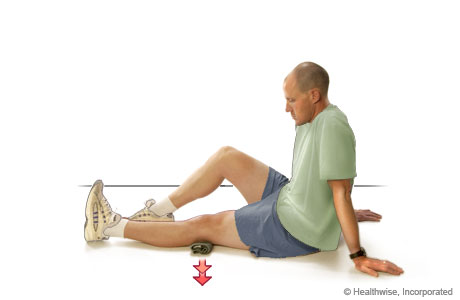Preparation for ROM
- Examine and evaluate patient
- Obtain information from medical record
- Determine goals and type of exercise to use
- Introduce yourself and explain the purpose, risks, and desired outcomes
- Obtain patient permission
- Position the patient and yourself
Principles of PROM Exercise
- Provide gentle, firm support and proper stabilization
- Move through entire unrestricted, normal ROM of a joint (end feel)
- Give special consideration to multijoint muscles
- Give special considerations to how the patient's diagnosis affects the exercise program, e.g., SCI, THR, CVA
- Position patient properly
- Perform passive movement in the direction opposite to the movement that the muscle would produce
- Determine purpose (goals) and sequence
- Perform exercise slowly and smoothly
Joint End-Feel
|
Normal |
Abnormal |
|
hard - normal bone to bone painless |
abnormal bone-on-bone indicates advanced degenerative changes |
|
soft - soft tissue compression |
spasm (early or late) protective response during motion
|
|
firm - springy, elastic resistance |
empty pain during motion without mechanical/muscle resistance
|
|
|
capsular hard or soft - tissue stiffness occurring earlier than expected in the ROM |
Types of Muscle Contractions
Three types:
- Isotonic: visible joint movement
- Eccentric: fibers lengthen
- Concentric: fibers shorten
This video shows examples of upper extremity concentric and eccentric exercises. Approximately 5 minutes
- Isometric: no or little observable joint movement and no significant change in muscle length; with or without external resistance
- these exercises are often called "sets", referring to a muscle setting response. Quad sets, hamstring sets are descriptions of isometric exercises for these respective muscle groups.

Video less than one minute
- Isokinetic: requires specific equipment to control the speed of patient's contractions and produces variable resistance throughout the range
This is a brief description of an isokinetic exercise and isokinetic exercise equipment used to control speed and resistance (Approximately 6 minutes)
End of Lesson

